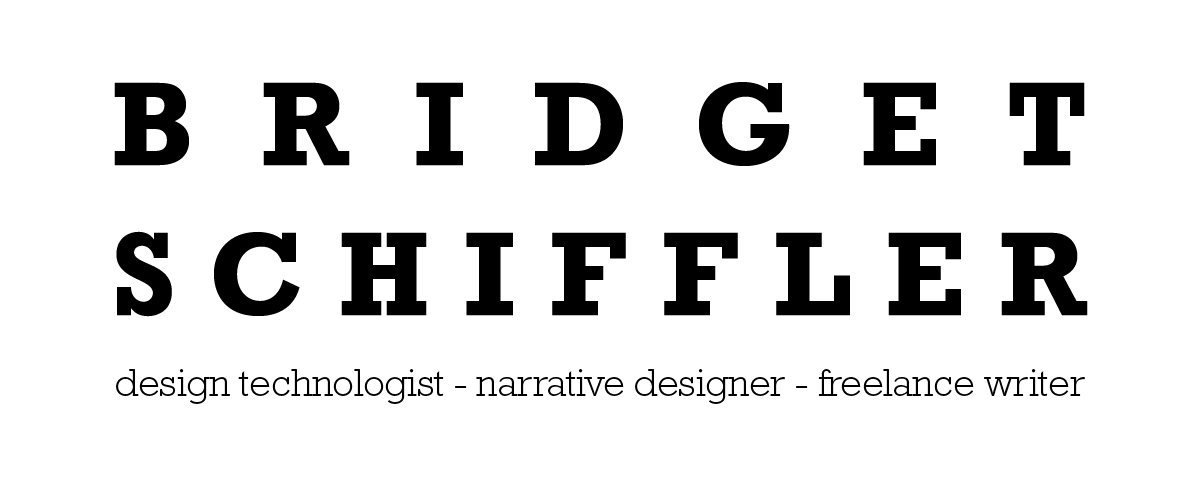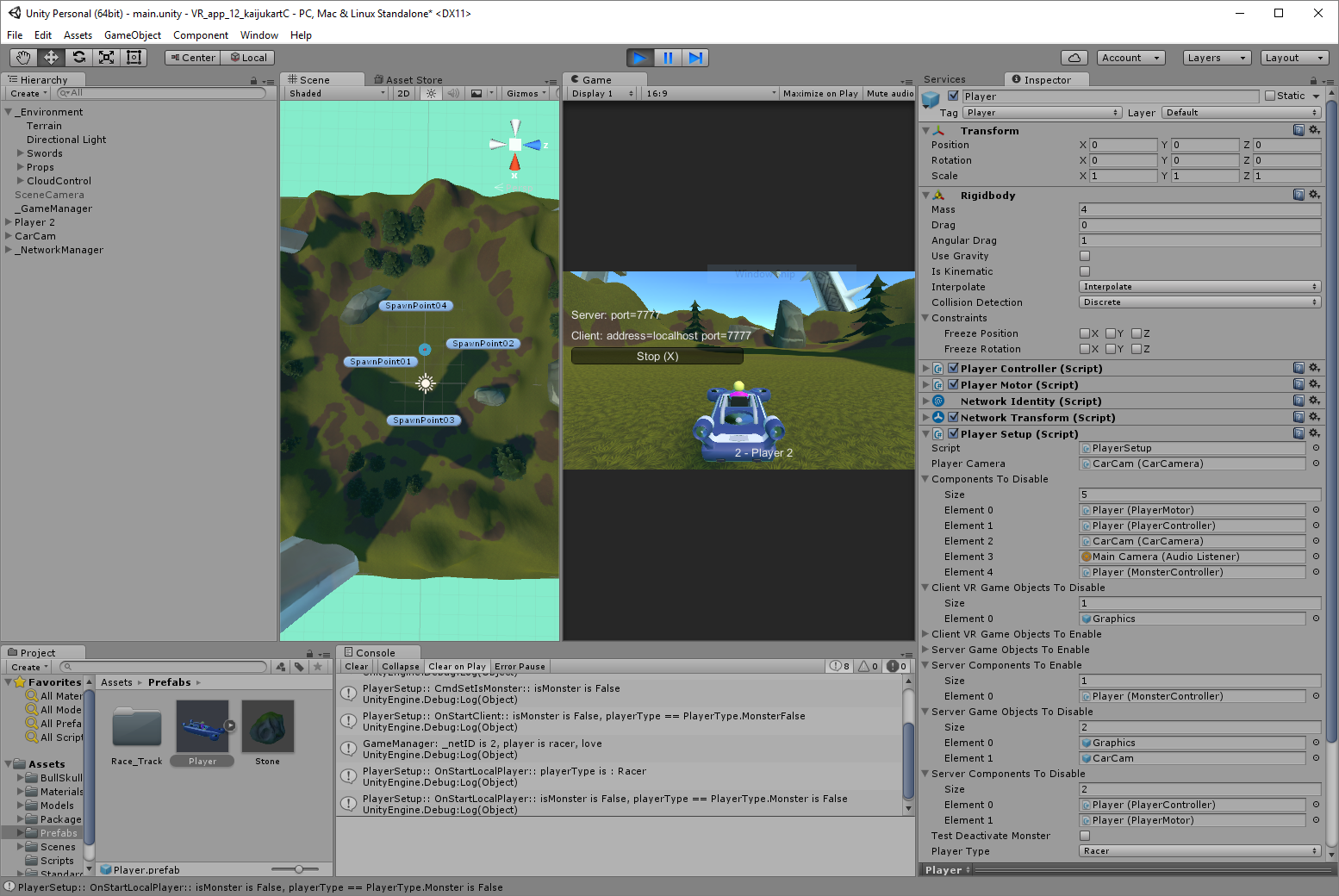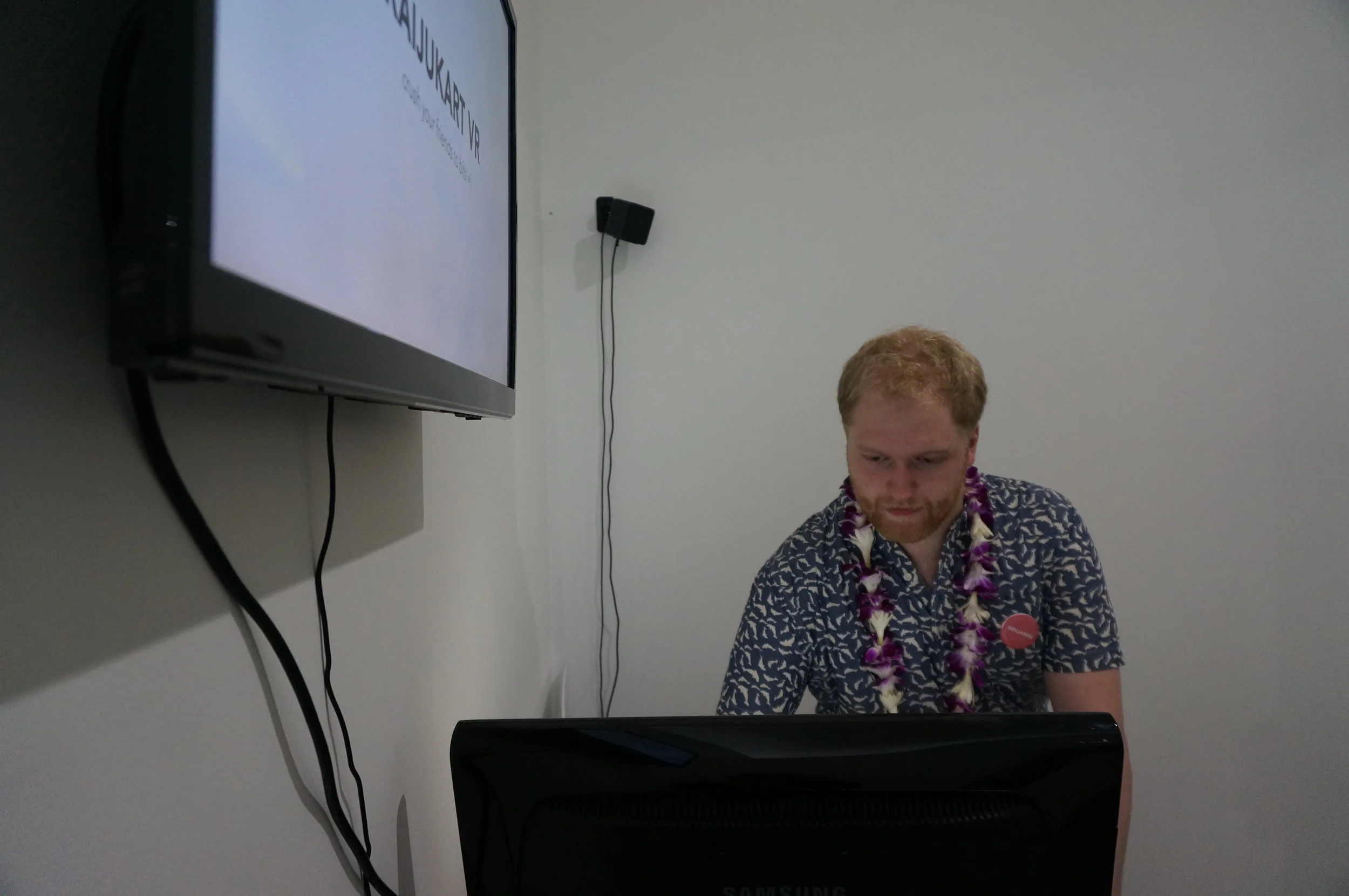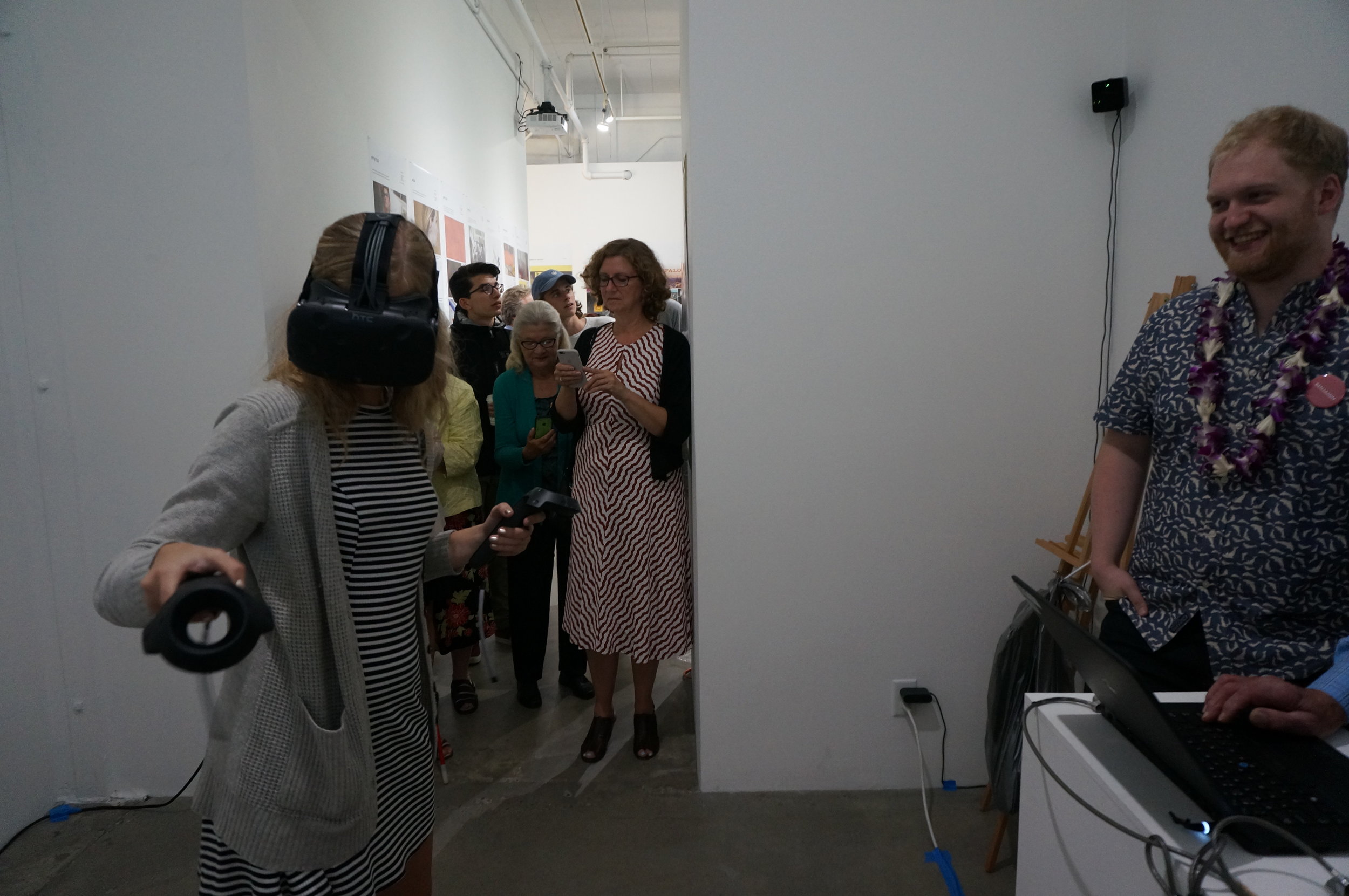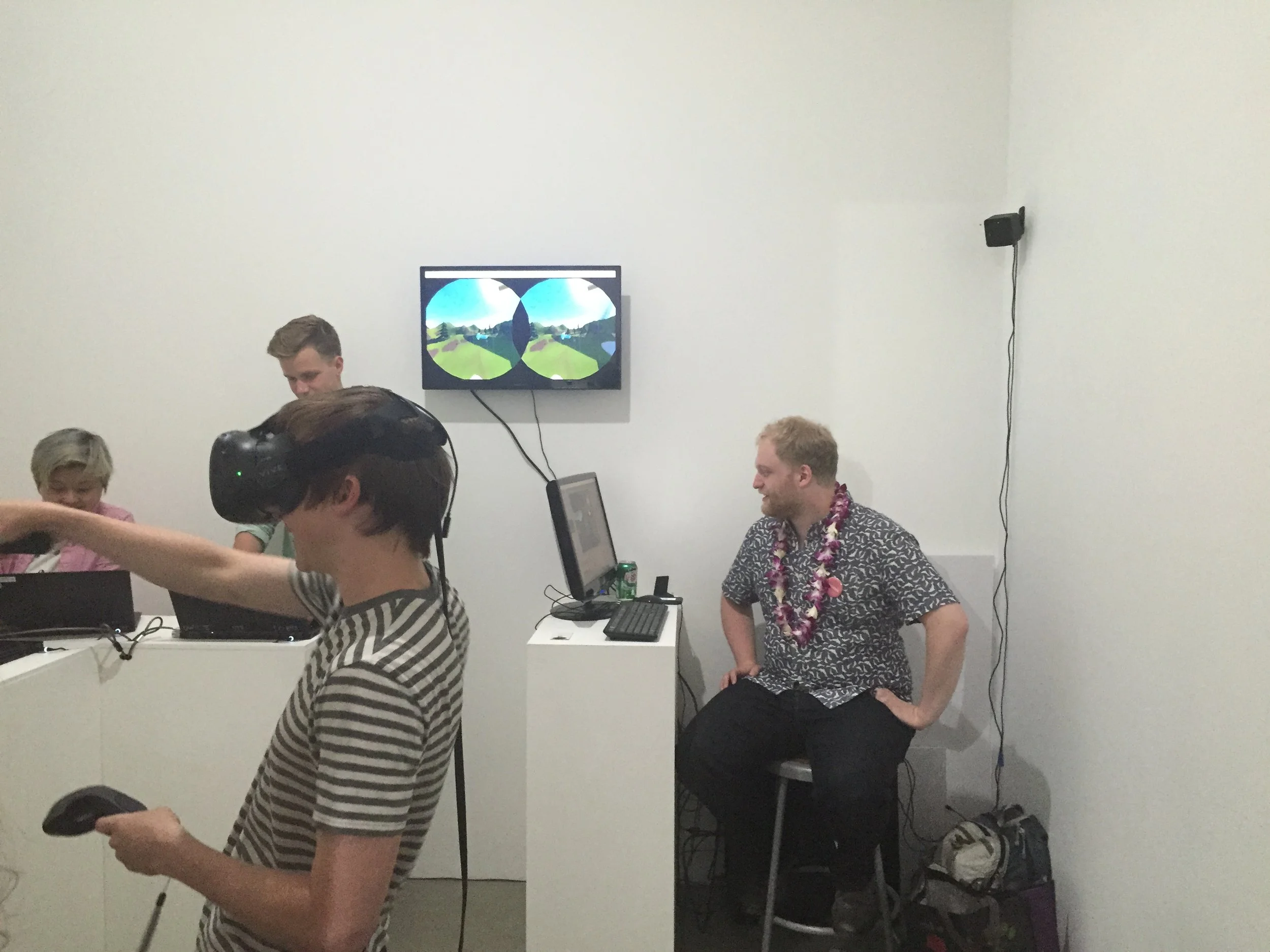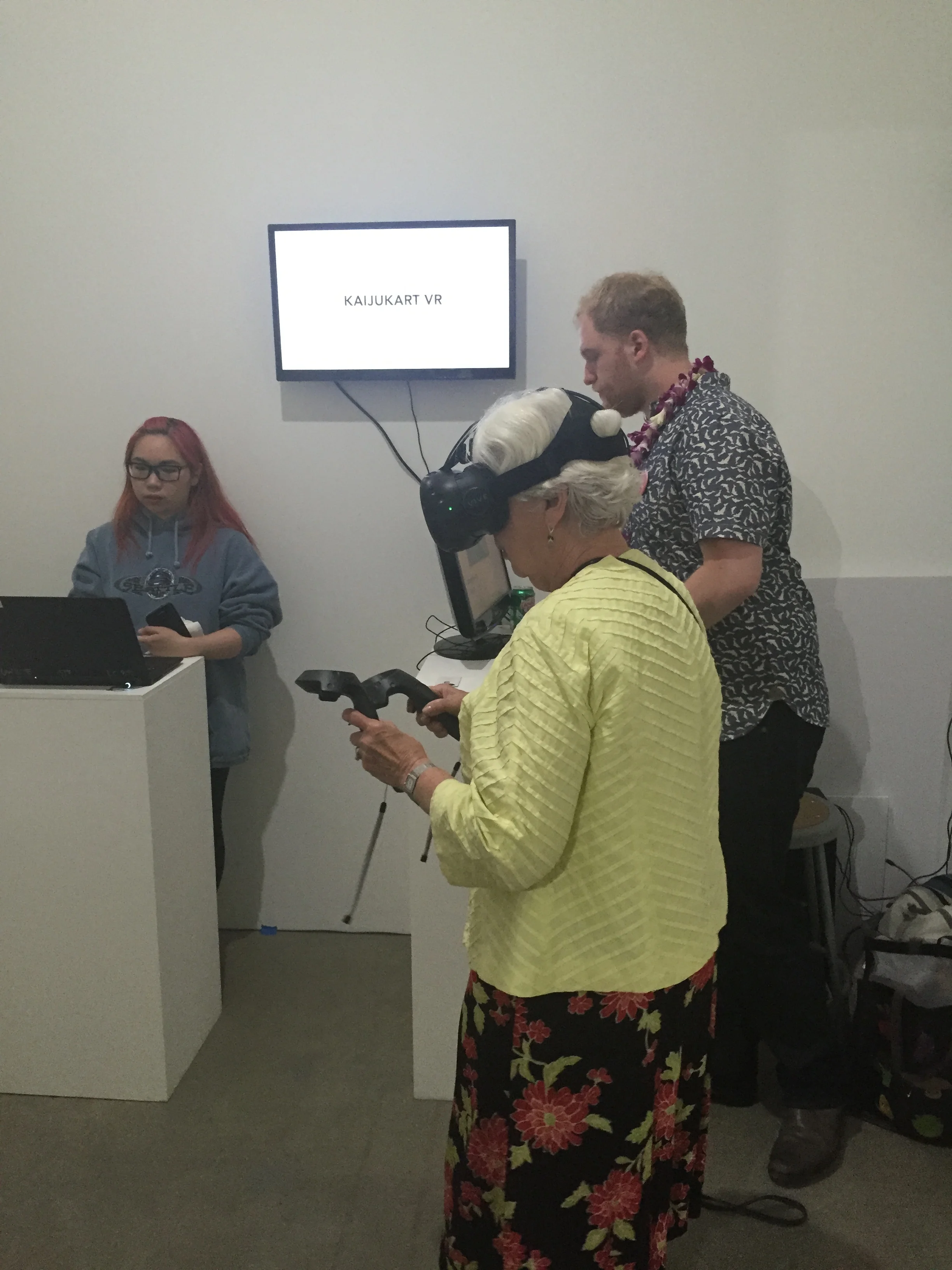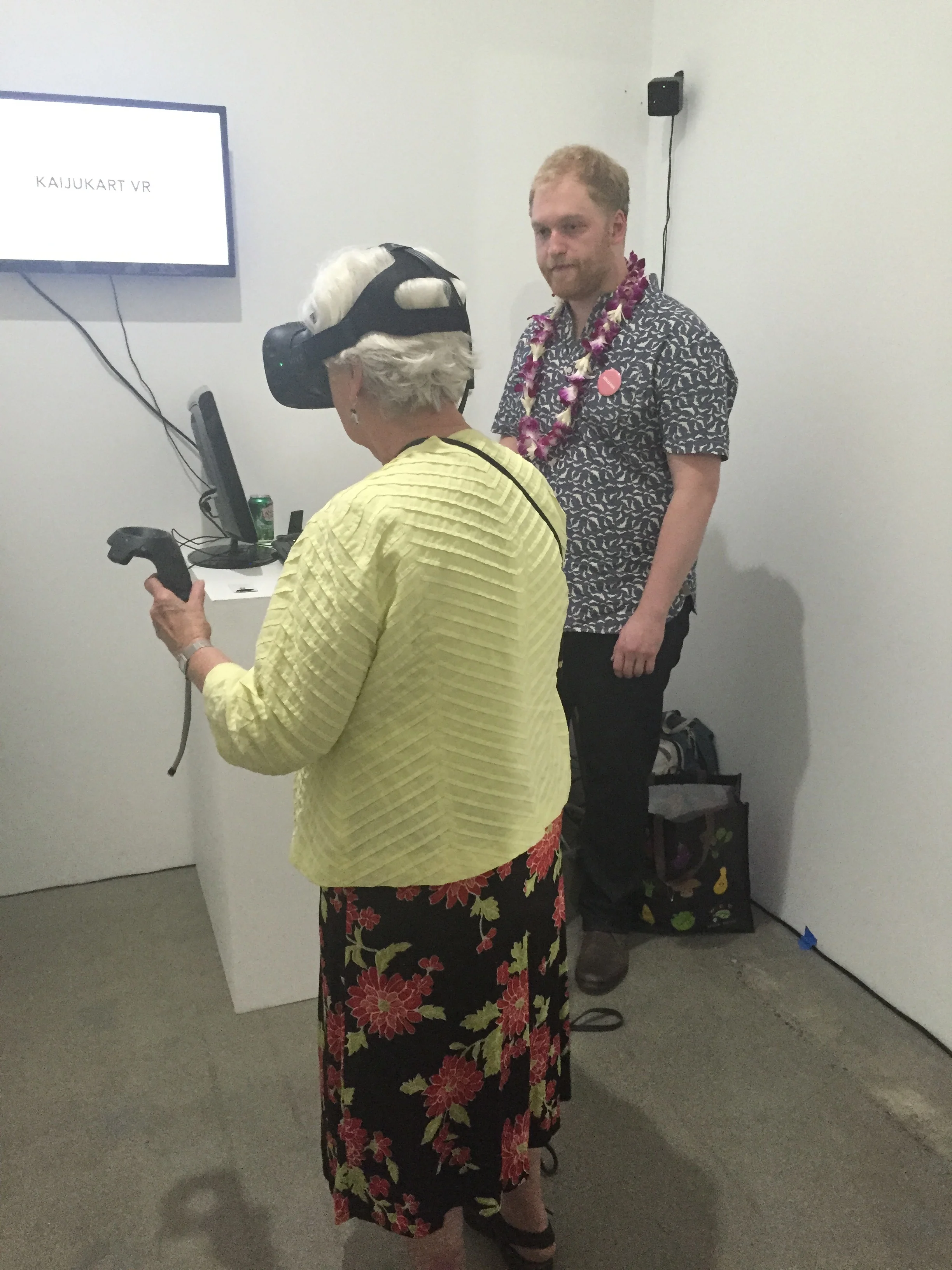KAIJUKART VR
KaijuKart VR is an asymmetrical multiplayer VR game project built by me as a solo project for the University of Washington's 2016 Design Show. Built in Unity for the HTC Vive, it pits four players racing hoverkarts against a single player in VR who acts as a giant trying to squash them with rocks.
The Goal
I came into this 10-week project with a specific and flexible goal. I wanted to create a working, playable Virtual Reality game. I wanted to adapt to the unique design space of VR, while teaching myself multiple game development tools and producing a finished game that friends could play in VR at the final design show.
THE RESEARCH
The quarter before I began this project, I took an independent study to try and understand the current VR Design space.Using a Oculus DK2 donated by Pluto VR, a beefy rig from the computer science department, and a lot of Googling, here’s what I found:
VR IS STILL NEW.
VR is an exciting and innovation-friendly field. This is amazing as it allows for many potential new design solutions. Yet it also has a frustratingly high cost and tech barrier to entry, on top of being very difficult to explain and advertise.
VR IS A GROUP ACTIVITY.
VR requires a lot of space, money, and technical know-how. So, most VR experiences are held in a group environment where resources can be shared. While this is a great opportunity for multiplayer, sadly only one person can use a VR headset at a time.
Image Source:
youtu.be/qYfNzhLXYGc
Image Source:
youtu.be/kAUZ1H2_fn8
VR ISN’T (OFTEN) ASYMMETRIC.
Games have a history of asymmetrical design, connecting players across platforms and genres. This design philosophy has not yet been heavily pushed outside of the innately asymmetric PSVR, despite it's possibilities with such a hardware-reliant platform.
The Design
I aimed to exploit this open gap of asymmetric multiplayer in VR. My initial design pit players outside of VR as race car drivers. A last player stood with a VR headset, acting as a Godzilla figure knocking them about. From that pitch, I contacted some friends to help me mock up what this might look like.
FOUND REFERENCE ART
It immediately became clear that the Giant and the Racers needed distinct design aesthetics to separate their spaces. With the racers I gravitated to splashy, colorful, punk-esque colors to make them immediately identifiable by the VR giant; while the giant took on more peaceful, foreboding, and ancient tones. Sample mood boards are below, and see the full board on Pinterest here.
LEARNING BY MAKING GAMES
I couldn't just jump into the final build, as I still knew little about VR development, multiplayer networking, racing simulation, and physics-based gameplay. So to teach myself over five weeks, I created 11 additional games to teach myself these tools, six of which are below.

Built off of Unity's tutorial series, I built and adapted a "Roll-A-Ball" project to work in VR for the Oculus DK2 by adding World-Space UI, adjusting controls, and altering cameras.

Referencing Unity's VR Demos, I built a 3D VR pixel-painting application with tangent-facing crosshairs, that allows a user to paint cubes around them controlled by eye gaze vectors.

Based on classic "Brick Breaker" games like Arkanoid and Breakout and this tutorial, I built this VR spin to sets you on the ground beneath the bricks, testing how VR elements like scale can shake up traditional designs.

Based off Unity's networking tutorials, I created a multiplayer third-person capsule shooting game to test multiplatform support and basic asymmetry, like client-specific color.

Next, based on this tutorial, I build a multiplayer driving game to test whether or not to use physics controls.
Finally, I followed this extensive tutorial to set up a Client-Host-Model physics-based FPS to serve as a sanity check for KaijuKart's Networking.
The first pass
Using the core of the "Networked VR Car Driver" game above, I built a first pass of this asymmetric racing game I now called "KaijuKart", in reference to Japanese Kaiju movies and good ol' fashioned MarioKart.
Character Development
Designs and development of the "Racer" character, who rides in the cart driven by the Non-VR players.
ADJUSTING TO TECHNOLOGY
No design happens in a vacuum, game design least of all. During development, I was required to design creative solutions to deal with tricky technological problems.
Player-player collisions were being handled by Unity's Rigidbody Networking systems, having a ground-hugging car became incredibly taxing on network resources. So I changed the karts to become hoverkarts, and everything got dramatically simpler.
I was working off an Oculus Rift DK2, but the intent was always to move to Vive Development. With a playtest in two days, my Vive finally shipped and I manically ported the game over two sleepless nights. The Vive operated on a dramatically different scale, so the whole game had to be rebuilt, scaled down by around 1000%.
Physics handling via network with the Oculus was infuriating, but fortunately TomorrowTodayLabs released an excellent open-source system for 1-to-1 physics handling on Vive called NewtonVR which I adjusted and implemented.
With a playtest in half a day, I had no game end state designed. Physics interaction and handling was complete, however, and karts could only drive while turned right-side up. The solution was simple: if you get flipped over, you lose, and the last kart standing wins.
THE PLAYTESTS
I knew that the more hands that tried out the game, the better it would end up being. I could only fit in one day of playtests due to time constraints, but I aimed to get the best results. Over 15 different people tested the game and provided interview feedback with 2-5 players playing at a time.
Playtest Takeaways
A great deal of notes, good ideas, experiments, and fresh bugs came out of this playtest (heavily proving it's worth). Among the notes were many important pieces of wisdom some of which are included below, with a full writeup of my notes available here on Google Docs.
- Most fun was had just playing around with VR & kart mechanics
- Kart physics needed an overhaul
- VR Monster needed a presence
- Terrain too bumpy, scale too small
- Players kept colliding with objects, better boundary projection wanted
- Enjoyed the VR physics handling
- Formal game mechanics were not mentioned as much as I'd expect
the FINAL BUILD
I had two weeks to polish the game after the playtest, I chose my priorities from the feedback. Racing mechanics were completely rebuilt, the environment redone, and physics colliders were fully reworked.
Formal game mechanics (win conditions, score, etc) were always on my radar, but testing showed people were far more interested in having a visible model of the monster, so my final push focused on that instead (to great success)!


THE SHOW
My final presentation of KaijuKart VR was at the UW Capstone Design Show at the Jacob Lawrence gallery. The show webpage which I helped work on can be found at uwdesign2016.com.
My project was in Gallery C, a roughly 10x10 space that presented several design challenges for setting up a 5-player multiplayer game. Chief among those was acquiring four laptops (generously lent by the UW's STF Program) and a VR-Capable PC (generously lent by local startup Pluto VR).
My designed layout optimize traffic flow for five players, observers, and myself in the space. I used a wall-mounted monitor display to show to viewers a pdf process presentation, as well as the VR Monster's view when there was an active player. A wall-mounted poster documented the development process.
DOWNLOADS
Thanks so much for reading and checking out my project! If you'd like to check out the project in more detail, downloads are available below. This project was a dream for me to get to make, so thank you so much to everyone involved!
You can download the Mac Client Here, and the Windows Client Here. The game only has one client; the first person to connect will be the VR player, and all others will be racers.
Warning: These builds were made for the show to be operated by me only, and are pretty obtuse and buggy to set up and run. If you run into issues setting it up, feel free to contact me and I'll be happy to help.
This is the final design pitch presentation I gave which served as the basis for this site. It played on a loop in the background of the Show while the game was not running. You can download the pdf from Google Drive here.
Applicants to the design show needed to create a jury submission form which would be passed through a jury of peers and advisors. You can download my submission here.
I also created a poster hung at the final show documenting the design and process. You can download the poster pdf here.
At the end of the IxD Capstone process, wrote a 1-page retrospective of their project. You can download my pdf retrospective here.
Completed:
Spring 2016
Duration:
10 Weeks
Course:
Interaction Design Capstone
Professor:
Tad Hirsch
Other Links:
Pinterest Mood Board
Responsibilities:
Programming | Design | Art | Running Demos | User Testing | Everything Else, aside from borrowed assets, donated assets & equipment
Tools:
C# | Unity | HTC Vive | Oculus Rift DK2 | Maya | Photoshop | Illustrator | InDesign
Tutorials:
Roll-A-Ball | Simple Oculus Game | Simple Vive Game | Breakout Game | Capsule Multiplayer | Car Networking | Unity Tutorials | Brackeys FPS | NewtonVR
Special Thanks
Mikey Wong - Character Animation
Esmeralda Duenas - Concept Art
Zixing Guo - Concept Art
Amanda Cook - 3D Modeling, Concept Art
Erin Caswell - 3D Modeling
Ashley Nguyen - Character Rigging
Pluto VR - Feedback, Donated VR Rig for Show
Barbara Mones, David Hunt, Robert Forsberg and all of the UW Animation Research Labs
& All the lovely folks that helped me through many demos, playtests, and user studies!
